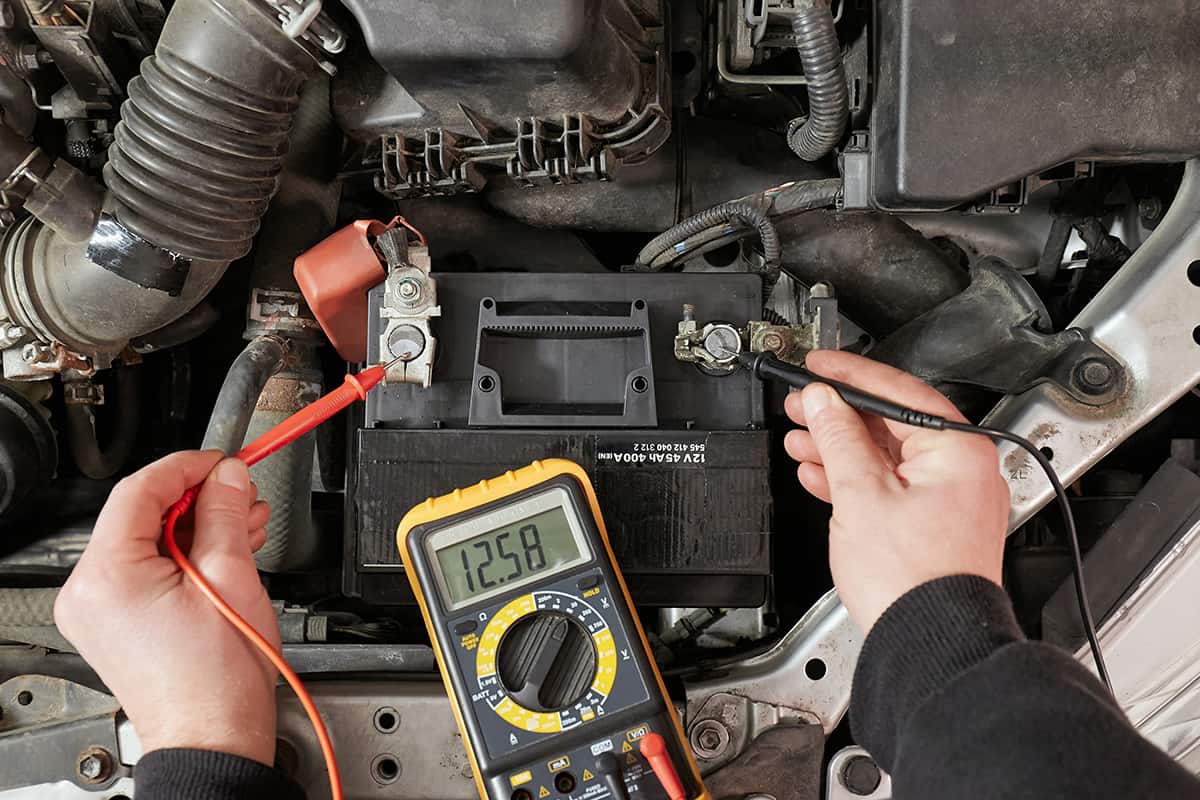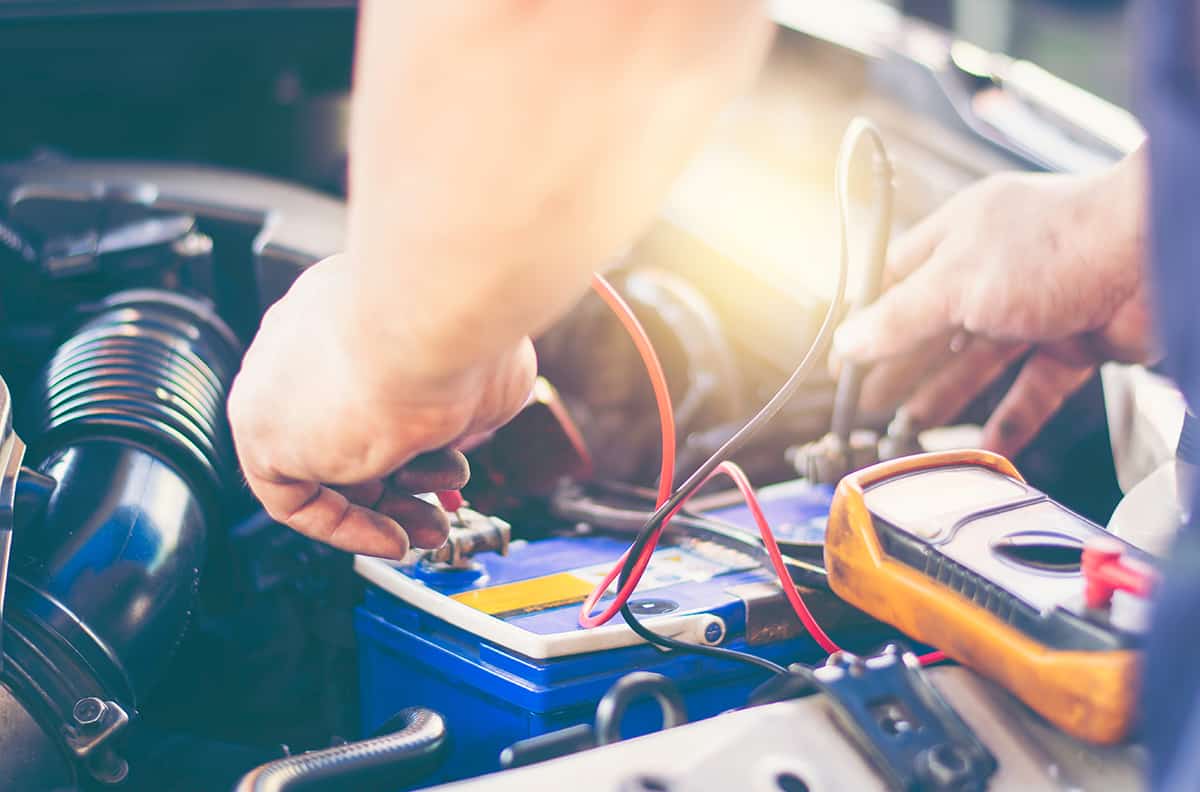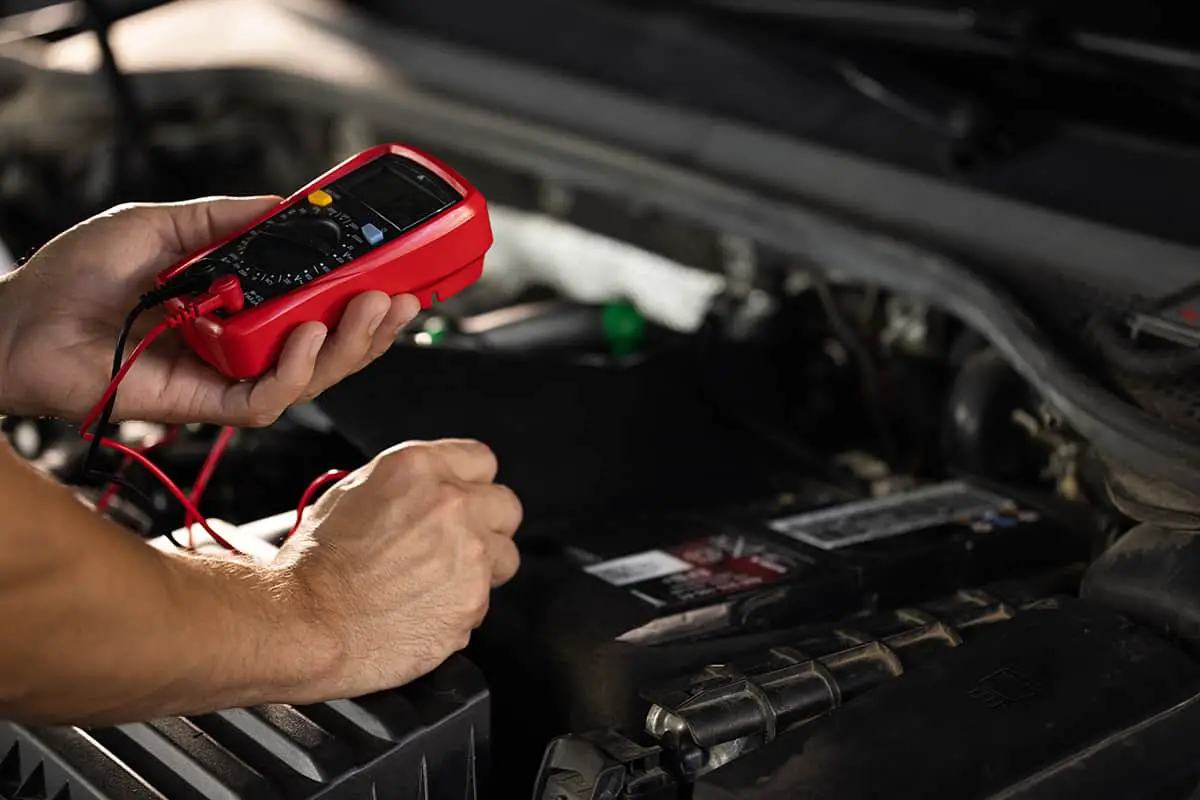Voltage fluctuations can impact the performance and lifespan of batteries, making it essential for users to monitor and manage these variations. Understanding how battery voltage works is important for maintaining the health and longevity of these power sources.
Voltage fluctuations in batteries are caused by various factors, including:
- Temperature changes
- Load
- State of charge
- Charging and discharging cycles
- Age of the battery
In this article, we will discuss the reasons behind battery voltage fluctuations, the effects of different factors on voltage stability, and how to identify and address potential problems.
Basics of Battery Voltage
Car batteries, typically lead-acid batteries, are crucial for starting and powering your vehicle. A fully charged car battery usually has a voltage of around 12.6 volts. As the battery discharges, the voltage decreases, and if it drops below 11.8 volts, it may struggle to start your car.
While charging, the voltage rises to about 13.7 to 14.7 volts to fully recharge the battery. Maintaining a stable voltage in your car battery is essential for optimal performance, ensuring your vehicle starts and runs smoothly.
Normal vs. Abnormal Fluctuations
Understanding the difference between normal and abnormal voltage fluctuations can help identify potential issues with a battery.
Normal
- Small changes in voltage are common during regular use (between 12.6 and 14 volts)
- Voltage decreases as a battery discharges and increases during charging.
- Slight changes in voltage can occur due to temperature, load, or state of charge.
Abnormal
- Large or rapid changes in voltage may indicate a problem.
- Abnormal voltage drops during use can result from a high load, faulty connections, or internal battery issues.
- Unusual voltage increases during charging could suggest a malfunctioning charger or charging system.
- Continual voltage instability might signify battery degradation, a failing battery management system, or other underlying issues.
Causes of Voltage Fluctuation

1. Temperature Effects on Voltage
Cold weather can impact battery voltage, as low temperatures cause a decrease in voltage. The chemical reactions within a battery slow down in colder conditions, reducing the energy output. Keeping batteries warm can help maintain their voltage and performance.
On the other hand, hot weather can lead to increased voltage, but also to faster battery degradation. Extreme heat can cause damage to the battery’s internal components, negatively affecting voltage stability.
2. Voltage Under Load
When a battery is put under load, its voltage can drop due to the increased current flow. A temporary voltage drop is normal when using high-power devices, but should return to normal levels once the load is removed. If the voltage doesn’t recover, it could indicate a weak battery, poor connections, or other issues.
3. State of Charge (SOC) and Voltage
The state of charge (SOC) is the remaining battery capacity as a percentage of its total capacity. Voltage and SOC are related, with higher voltage indicating a higher SOC. As a battery discharges, its voltage decreases, signaling a lower SOC.
4. Charging and Discharging Cycles
During charging, the battery voltage increases as energy is stored within the battery. Once fully charged, the voltage should stabilize at a certain level, depending on the battery type. As the battery discharges, the voltage will gradually decrease, eventually reaching a point where recharging is necessary. Repeated charging and discharging cycles can affect voltage stability over time.
5. Battery Age and Voltage Stability
As a battery ages, its ability to hold a stable voltage decreases. Battery degradation can lead to more frequent voltage fluctuations and reduced overall performance. Identifying signs of aging, such as swelling or decreased runtime, can help determine when it’s time to replace the battery for better voltage stability.
How to Overcome Battery Voltage Fluctuations
Here are a few things you should do if you notice irregular voltage ups and downs:
1. Identify the cause
Investigate factors like temperature, load, state of charge, battery age, and connections to determine the cause of voltage fluctuations.
2. Address temperature issues
- Keep batteries warm in cold weather by using insulation or storing them indoors.
- Protect batteries from excessive heat by ensuring proper ventilation and avoiding direct sunlight.
3. Manage load

- Avoid using high-power devices for prolonged periods.
- Distribute the load among multiple batteries if possible.
4. Maintain proper state of charge
- Charge batteries before they reach a critically low SOC.
- Avoid overcharging, which can harm the battery and affect voltage stability.
5. Replace old batteries
- Monitor battery age and performance.
- Replace batteries that show signs of aging or reduced voltage stability.
6. Check and clean connections
- Inspect battery terminals for corrosion or loose connections.
- Clean and tighten connections to ensure proper electrical contact.
7. Test and troubleshoot charging systems
- Verify that the charger and charging system are functioning properly.
- Replace malfunctioning chargers or seek professional help for complex charging system issues.
8. Monitor battery voltage
Use tools like multimeters or battery monitoring systems to keep track of voltage fluctuations. Regular monitoring can help identify and address issues early on.
Impact of Poor Electrical Connections
Poor electrical connections can have a significant impact on battery voltage stability and overall performance. When connections are not secure, the flow of electricity can be disrupted, causing fluctuations in voltage and possibly damaging the battery.
1. Corrosion and voltage instability
Over time, battery terminals can become corroded, which hinders the flow of electricity. Corroded connections can cause voltage drops and make it difficult for the battery to deliver power effectively. Regularly checking for corrosion and cleaning the terminals can help maintain proper voltage stability.
2. How to check and clean connections
- Inspect battery terminals for signs of corrosion, such as a white or green powdery substance.
- Disconnect the battery before cleaning to avoid any electrical hazards.
- Use a wire brush or a battery terminal cleaner to remove corrosion from the terminals.
- Apply a thin layer of dielectric grease or petroleum jelly to the terminals to protect them from future corrosion.
- Reconnect the battery, making sure the connections are tight and secure.
FAQs
1. What is battery voltage and why is it important?
Battery voltage is like the push that makes electricity flow through a battery. We measure this push in volts (V), and it shows how well a battery can give power. Having the right voltage is important because it helps the battery work well and last longer. If the voltage stays steady, the battery is working properly. But if the voltage keeps changing, it could mean there’s a problem or the battery isn’t working as well as it should.
2. What are the common causes of voltage fluctuations?
Common causes of voltage fluctuations in batteries involve temperature changes, load, state of charge, and the battery’s age. These factors can result in voltage going up and down, sometimes indicating problems that require attention.
For example, extreme temperatures can affect battery performance, while heavy loads can cause a temporary drop in voltage. An aging battery may have a harder time maintaining stable voltage. Poor electrical connections or issues with charging systems can also contribute to voltage fluctuations, further highlighting the need for proper maintenance and monitoring.
3. How can I monitor my battery’s voltage?
You can monitor your battery’s voltage using tools like multimeters or voltmeters. These devices measure the voltage across the battery terminals and display the reading. Regular monitoring helps identify voltage fluctuations and potential problems early, allowing you to take action and maintain battery health.
4. What steps can I take to minimize voltage fluctuations?
To minimize voltage fluctuations, ensure proper battery storage, avoid extreme temperatures, maintain a healthy state of charge, and replace old batteries when necessary. Keep electrical connections clean and secure, and check the functionality of your charging system.






